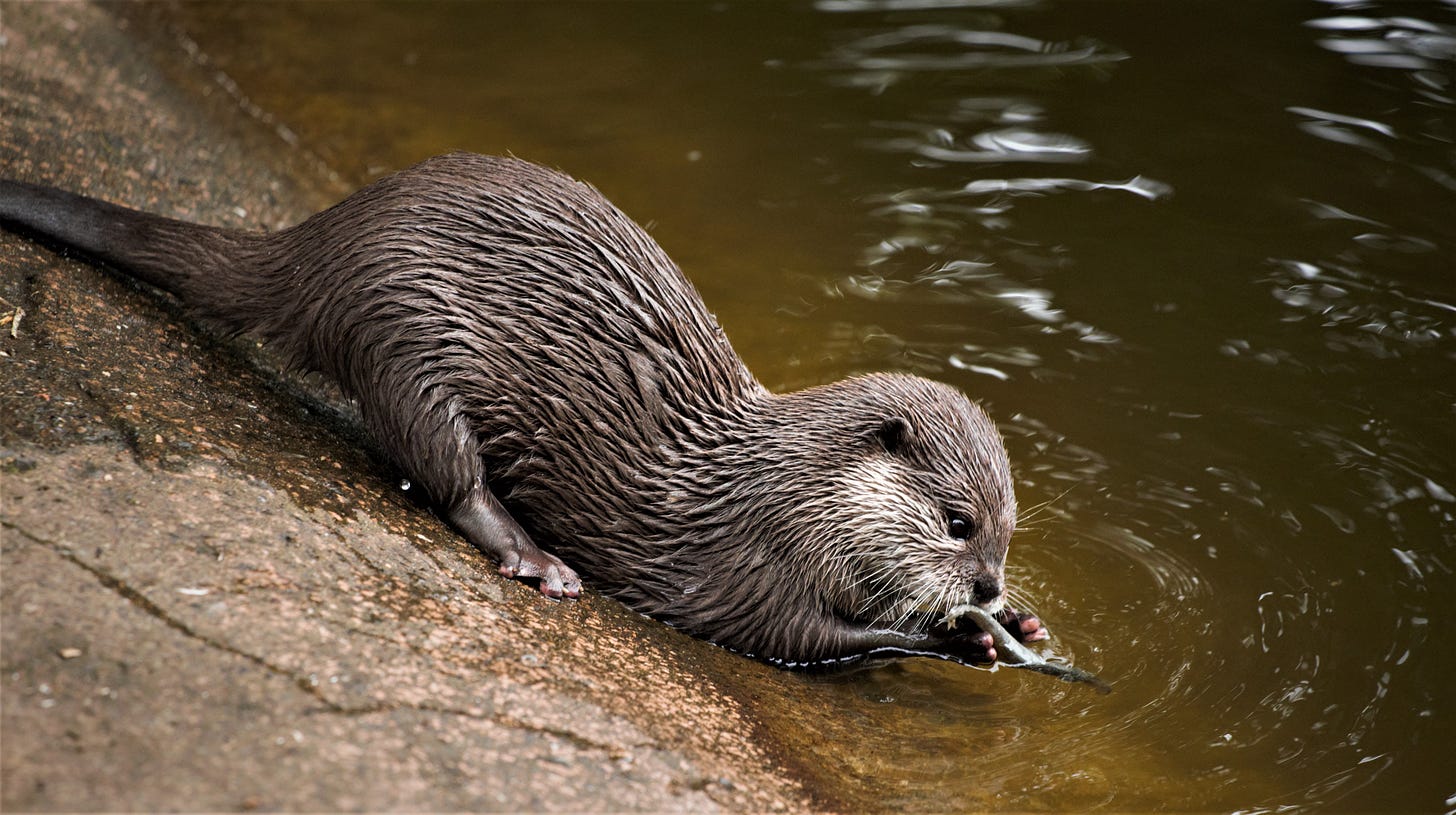Measuring Animal Welfare, Part Three: Natural Behavior
Rescuing animal welfare from the naturalistic fallacy

So you might notice a recurring theme in my previous post:
The Five Freedoms says “freedom to express normal behavior”
Fraser says “accommodate natural behaviors and affective states”
Webster says “Is the animal living in an environment consistent with that in which the species has evolved and to which the species is adapted?”
If you’ve been reading me for a while, you might think “but wait! Nature is awful!” To quote Richard Dawkins’s River Out Of Eden:
The total amount of suffering per year in the natural world is beyond all decent contemplation. During the minute it takes me to compose this sentence, thousands of animals are being eaten alive; others are running for their lives, whimpering with fear; others are being slowly devoured from within by rasping parasites; thousands of all kinds are dying of starvation, thirst and disease.
The animal welfare lists say that animals should be free to express normal and natural behavior in the environment in which the species has evolved. But no one would suggest that welfare would be improved by animals being eaten alive, running for their lives in terror, being devoured by parasites, or dying of thirst or disease—all normal, natural behaviors in the environment in which the species has evolved.
It’s tempting to jump to the conclusion that this is the purest naturalistic fallacy: the illogic that nature is good, and therefore the kinds of lives that animals had in nature were good, QED. A thoughtful animal advocate should strike these from the list!
But I think there’s something real here. We know that animals want to perform certain behaviors, even if all their physical needs are met. Sows and birds with pre-built nests still want to build nests, and calves fed milk from a bucket still want to suckle. When you talk about why the animals want to perform those behaviors, it’s hard to resist the urge to say that they’re, well, natural. They’re the sort of thing animals are supposed to do.
Here, I turn towards the capabilities approach. The capabilities approach holds that all rational beings should have certain central capabilities protected: the ones that are most important for them to be able to live a free and dignified life, suitable for the kind of being that they are. Importantly, each species has its own central capabilities. Nest-building is a central capability for sows and birds; suckling, for calves.1 But baby birds don’t need to suckle, and cows don’t need to build nests. When people say “natural” or “normal” or “in the environment the species evolved in,” I think the thing they’re groping for is the central capabilities of the species.
Central capabilities for many species include social behavior, play behavior, parenting, mating, exploration, and the meeting of ethological needs (behaviors which typically led to the acquisition of resources in the environment of evolutionary adaptedness, such as digging or swimming).
Importantly, the wild is often a terrible place for a species to exercise its central capabilities. For example, the wild doesn’t necessarily allow animals to meet behavioral needs for novelty. Many wild animals don’t have the opportunity to mate. And, of course, many animals die before they get the chance to do much of anything at all. We see behavior changes in captive animals: for example, captive giraffes have enough grass and no predators, so they spend more time grazing and lying down. Perhaps captivity has allowed the giraffes to fully exercise their central capabilities for grazing and rest.
So if we can’t rely on the wild as a source of information about central capabilities, what can we do? We can generalize from the kinds of central capabilities that exist in many species, including our own, as I did two paragraphs above. We can observe animals in the wild, while carefully paying attention to what animals are doing for its own sake and what they’re doing to avoid some kind of undesired outcome. We can observe an animal in the best possible living conditions and see what kinds of things she does. We can ask animals what they want, and derive from this what kinds of things they care about. With epistemic humility, I believe the capabilities approach offers a satisfying explanation for this intuition that does not fall victim to the naturalistic fallacy.
And human babies.

Nicely put.
FYI, the “behavior changes in captive animals” link is broken (I get access denied).